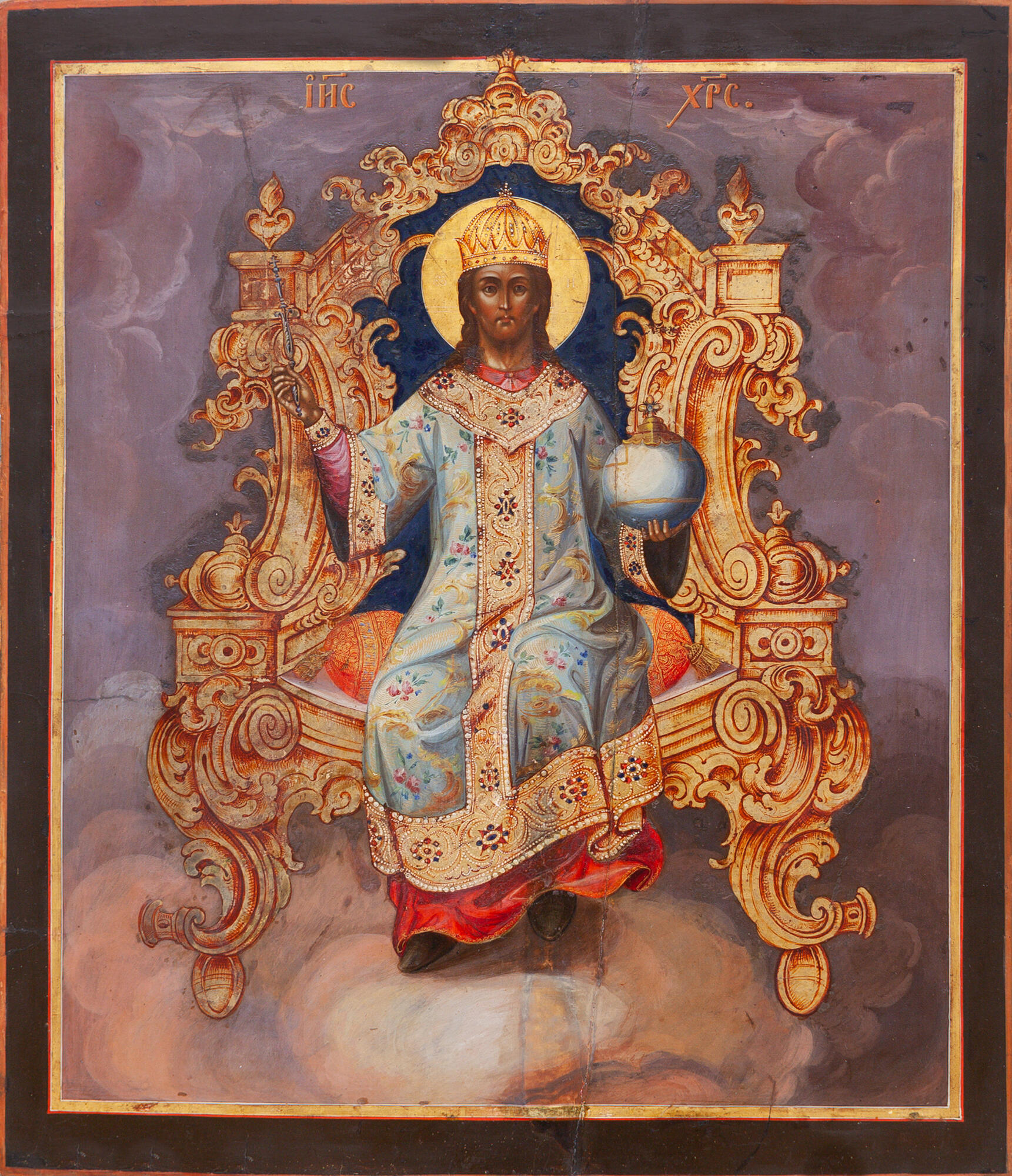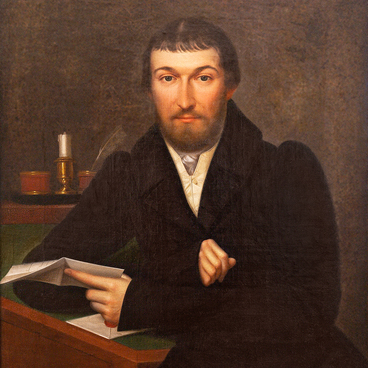King of Kings is one of the rarest images of the Savior. The phrase from the Book of Revelation of St. John the Theologian gave name to this iconographic type:
King of Kings
Время создания
the second half of the 18th century
Размер
62x53 cm
Техника
wood, levkas, tempera, oil
Коллекция
Выставка
4
Открыть в приложении#1
King of Kings
#2
#4
On his robe and on his thigh he has a name written, King of kings and Lord of lords.
Rev.19: 11-17
#5
Images of the Savior as a King and High Priest are part of the Deisis row of the iconostasis. Christ is depicted in the center of the row of icons, and to the right and left of him are saints with crossed arms or hands, a traditional gesture of intercessory prayer. Most often, Jesus is flanked by the Mother of God and John the Baptist, but Deisis can also include the apostles, holy fathers, and martyrs.
Since separate icons (the ones that were not part of an iconostasis) of the King of Kings type are extremely rare, researchers suggest that the icon from the Tomsk Museum was part of the Deisis row of one of the Tomsk churches.
Jesus Christ is represented seated on a gold throne with a pillow. The throne symbolizes the visible and invisible world of God. It is also considered an attribute of royal dignity. Abundant gilding and silvering with nielloed ornaments and plentiful Baroque decorations of the throne create a solemn image of the greatest King of kings and bishops.
The throne soars in the Heavens, represented by ochre-pink clouds, which are created by expressive brush strokes. Thick clouds are painted under the feet of Christ instead of the traditional footstool.
The Savior is dressed in a dalmatic — the royal clothing of Byzantine emperors, richly embellished with a golden pattern. The crown on his head resembles a bishop’s miter. In his hands he holds the attributes of power — the globus cruciger (the orb) and the scepter.
The face of the Savior is painted by subtle ochering on sankir (brownish color) with an olive tinge. Ochering (“vokhrenie” in Russian) is the process of adding progressively lighter layers over one another to transition from the main dark tone — sankir — to lighter ones. The upper layer of white paint was used to highlight the face under the eyes and on the forehead.
The bizarre curved lines of the throne, the contrasting juxtaposition of gold and red colors, the powerful folds of the royal vestments of the Savior are characteristic of the Baroque style, which was popular in the 17th–18th centuries.
Since separate icons (the ones that were not part of an iconostasis) of the King of Kings type are extremely rare, researchers suggest that the icon from the Tomsk Museum was part of the Deisis row of one of the Tomsk churches.
Jesus Christ is represented seated on a gold throne with a pillow. The throne symbolizes the visible and invisible world of God. It is also considered an attribute of royal dignity. Abundant gilding and silvering with nielloed ornaments and plentiful Baroque decorations of the throne create a solemn image of the greatest King of kings and bishops.
The throne soars in the Heavens, represented by ochre-pink clouds, which are created by expressive brush strokes. Thick clouds are painted under the feet of Christ instead of the traditional footstool.
The Savior is dressed in a dalmatic — the royal clothing of Byzantine emperors, richly embellished with a golden pattern. The crown on his head resembles a bishop’s miter. In his hands he holds the attributes of power — the globus cruciger (the orb) and the scepter.
The face of the Savior is painted by subtle ochering on sankir (brownish color) with an olive tinge. Ochering (“vokhrenie” in Russian) is the process of adding progressively lighter layers over one another to transition from the main dark tone — sankir — to lighter ones. The upper layer of white paint was used to highlight the face under the eyes and on the forehead.
The bizarre curved lines of the throne, the contrasting juxtaposition of gold and red colors, the powerful folds of the royal vestments of the Savior are characteristic of the Baroque style, which was popular in the 17th–18th centuries.
#3
Ministry of Culture of the Russian Federation
читать дальшескрыть
00:00
00:00
1x
King of Kings
Время создания
the second half of the 18th century
Размер
62x53 cm
Техника
wood, levkas, tempera, oil
Коллекция
Выставка
4
Открыть в приложении
Поделиться



